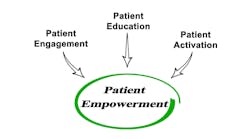Health information technology systems such as practice management systems and electronic health records (EHRs) have now developed to the point where they can assist these centers in terms of reporting and patient-care support, both integral components in establishing program sustainability.
The Health Resources and Services Administration (HRSA), a component of the U.S. Department of Health and Human Services, helps provide grants to these Federally Qualified Health Centers (FQHC). As these centers rely on federal funding and grants for their operations, there are some necessary reporting needs that can be provided by implementing a practice management system that addresses the specific needs of community health centers.
Practice management systems now give users the ability to capture demographic data beneficial to community health centers, such as homeless status, migrant worker status, language barrier, and primary medical coverage. Along with the capture of this patient data, these systems process medical billing and claims to government payers, Medicare and Medicaid, as well as commercial payers.
Some of the specific reporting needs of community health centers are for the completion of Uniform Data System reports. The HRSA collects data from health centers supported by HRSA Bureau of Primary Health Care grants through UDS reports. UDS reports collect basic demographic information on the populations served by the centers, such as race/ethnicity and insurance status of their patients. Certain data collected in the reports, such as patient outcomes or health improvements, provide information on program effectiveness.
With an integrated practice management and EHR system, centers can collect UDS data in one place rather than having to manage data from a number of disparate sources. Other reporting that can be achieved with these clinical systems are encounter-reporting and the creation of state-specific required reports.
Key features that practice management systems provide are the ability to track a family's size and income without having to attach a sliding fee schedule. Sliding fee schedules allow the setup of a variable adjustment schedule, based on family size and income, as well as basing a percent of the charge adjustment on federal guidelines for family size and income.
On the EHR side of the equation, the challenge presented is that these centers provide a wide range of services to the patient populations they see. Services provided range from mental health/substance abuse and enabling services to obstetrical and gynecological care, primary medical care, and dental care services.
EHRs provide benefits such as clinical decision-support tools and now are able to provide documentation support through the use of templates customized across a swath of specialties. EHRs also enable users to secure patient visit notes, especially those being seen for the treatment of behavioral conditions, drug abuse, or HIV. Additionally, they enable clinicians to manage chronic diseases such as hypertension, diabetes, and depression.
Just as utilizing a practice management system for billing and reporting provides benefits, there is the similar ability to capture patient population data directly from the EHR system for use in supporting the Health Disparities Collaborative. The primary focus of the Health Disparities Collaborative is to improve patient care results. This is accomplished by targeting the disparities existing in this country among underserved populations and providing them with improved standards of care and greater heathcare access.
Streamlining required reporting, data collection, and illustrating sustainability through the incorporation of clinical systems as operational mechanisms is a necessary progression for community health centers to help improve care for those who need it most.
Author Information:Michael Cassarino is a project manager for Horsham, Pa.-based NextGen Healthcare Information Systems.

